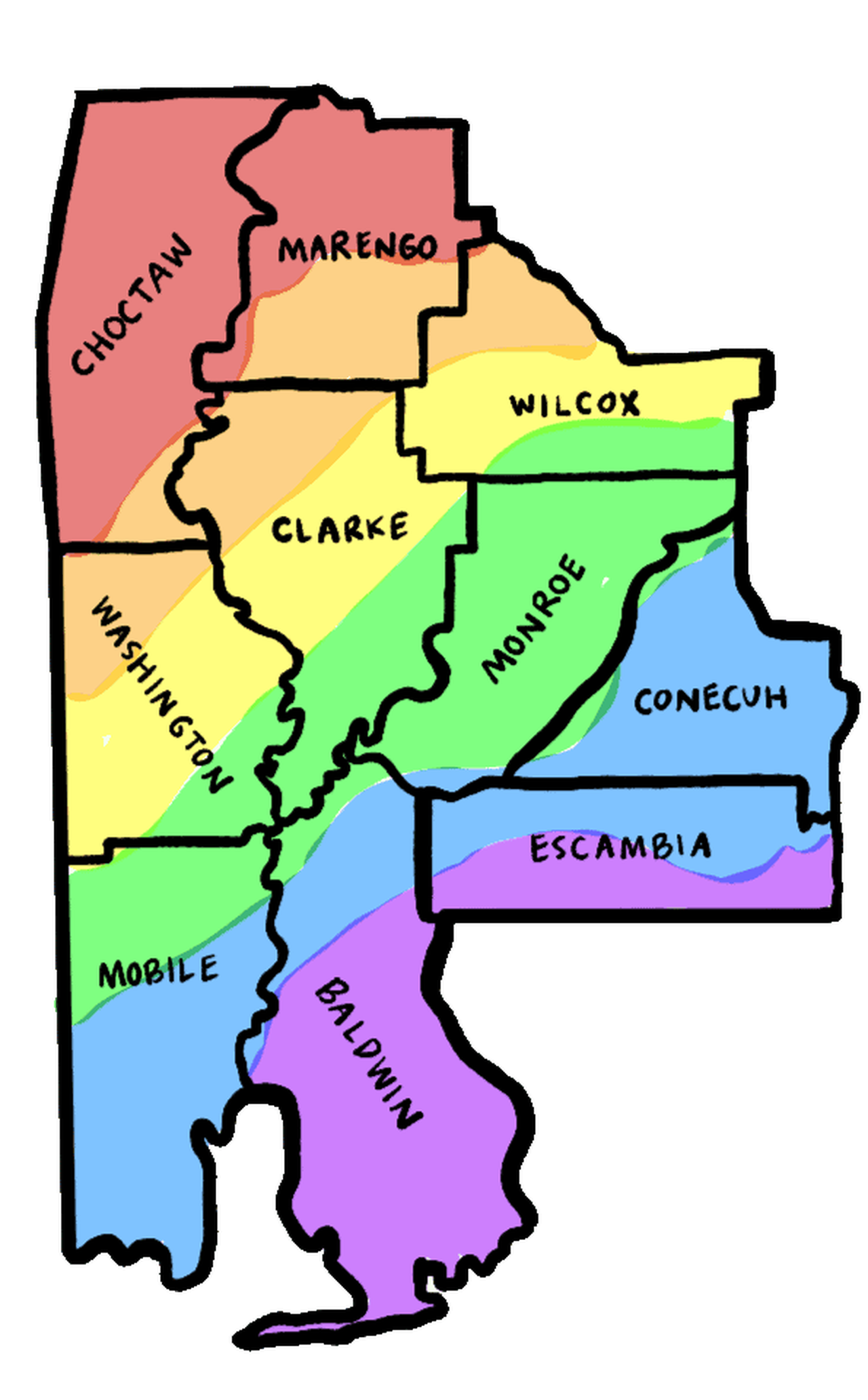Local researchers aim to make southwest Alabama more LGBTQ inclusive
A soon-to-be-conducted survey through the University of South Alabama is setting its sights on Southwest Alabama, a region one group believes has often gone overlooked in LGBTQ advocacy initiatives.
The Southwest Alabama Inclusion Project is an initiative spearheaded by Prism United, a Mobile organization that provides programming and resources to LGBTQ youth and people who care for them. The project aims to better understand the experiences of LGBTQ people in the Southwest Alabama area in order to identify needs such as health, safety and support.
Researchers behind the study have two primary goals: to understand the LGBTQ community’s priorities for improving community health and to measure how social experiences are impacting the mental health of LGBTQ people in Southwest Alabama.
“The importance of this project is it’ll be some of the first scientific data that we’ll have on what LGBTQ people are actually going through here,” Corey Harvard, executive director of Mobile LGBTQ advocacy group Prism United, said. “And it’s going to come at a time where LGBTQ people are being politicized and targeted in this country in a way that is pretty scary.”
The survey will cover Baldwin, Choctaw, Clark, Conecuh, Escambia, Marengo, Mobile, Monroe, Washington and Wilcox Counties — a combined population of about 800,000.
“In order to expand, we need more hard data to do grant proposals or project proposals and things of that nature,” Project Manager for the Southwest Alabama Inclusion Project Tiffany Trotter said. “In discussion with a few other nonprofits, the executive board came to realize that this community needs assessment would actually be used not only for Prism, but a whole onslaught of local organizations.”
Now, the project lists around 30 partner organizations on its website, including the Mobile County Health Department, the Black Belt Community Foundation and the Center for Fair Housing.
The results of the study will be used to help these organizations identify what the community’s needs are so they can best utilize resources to address those needs.
“We really want to position organizations to develop programming and develop resources based on what the community says we need, versus just guessing based on our own lived experiences,” said Mary Smith, primary investigator for the LGBTQ Community Needs Assessment of Southwest Alabama.
Smith said they hope to get at least 500 survey respondents, but their goal is to reach 1000. Depending on the responses and level of input the researchers receive, there are plans to conduct other, more specific community needs projects.
Currently, the project is awaiting institutional review board (IRB) approval, but Smith and Trotter said they expect the survey to go live at some point in February.
Published data already indicates those community needs are high. The Human Rights Campaign (HRC) recently released their annual Municipal Equality Index results, which examines “how inclusive municipal laws, policies, and services are of LGBTQ+ people who live and work there,” according to their website.
HRC considers criteria related to non-discrimination laws, law enforcement, services provided to LGBTQ people, and more.
For 2022, Mobile scored a 36 — 17 points above their 2021 score. But still low in comparison to other cities such as Birmingham, which scored a perfect 100 for 2022. Huntsville and Montgomery scored a bit lower with a 20 and 40, respectively.
Mobile’s Prism United has relied on data from studies conducted by organizations such as the HRC since its founding. Harvard said that much of this data is helpful to them, but sometimes it’s just not enough.
“What we see across the board is that LGBTQ young people are the most at risk population in this country,” he said. “The problem is that this is all national data. So, that still doesn’t quite tell the story about what the lived experience for LGBTQ people in the South, specifically the southeast, specifically Alabama, and even more specifically, lower Alabama.”
This lack of meaningful data on LGBTQ community needs is not proportional to population figures. According to the UCLA School of Law Williams Institute, the South is home to the largest share of LGBTQ people in the U.S., coming in at 35% — in second place is the Midwest with 20% of the LGBTQ population.
“By pulling together this data, we’re going to be able to say, ‘Yes, we are here, we are experiencing these specific challenges,’” Smith said. “That’s our first step toward being able to address them directly.”
LGBTQ people in Southwest Alabama can sign up to be notified when the survey is ready to take on the Southwest Alabama Inclusion Project’s website.
